As hunters we often spend an exorbitant amount of time and effort getting back into far off valleys to pursue an animal. More often than not, once the animal is down, we pack up, blitz back to our trucks and head for home. What we leave behind in those remote valleys is often amazing country that we haven’t truly had the time to sit back and savour.
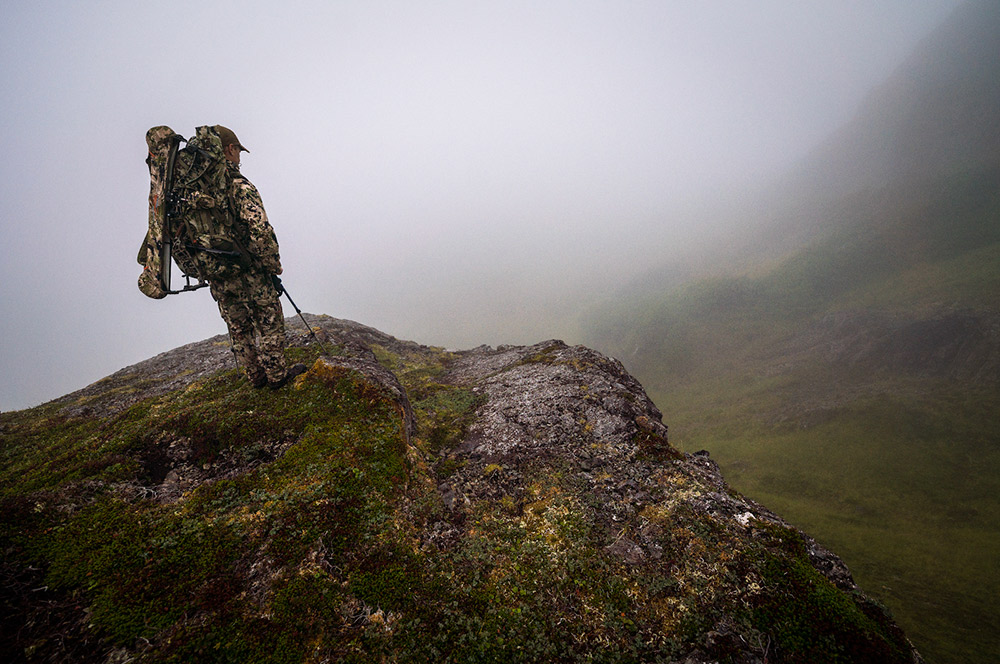
I like to think that if the food we ate on these backcountry hunts tasted better we might be inclined to spend more time out there after an animal is down. The challenge is how to pull it off with minimal cooking equipment and ingredients.
Recently, up a remote inlet in coastal B.C., I took a Sitka blacktail buck with some buddies and we were faced with this exact opportunity. What we turned to is a method that uses very few ingredients and produces pretty darn good results for backpack cooking.
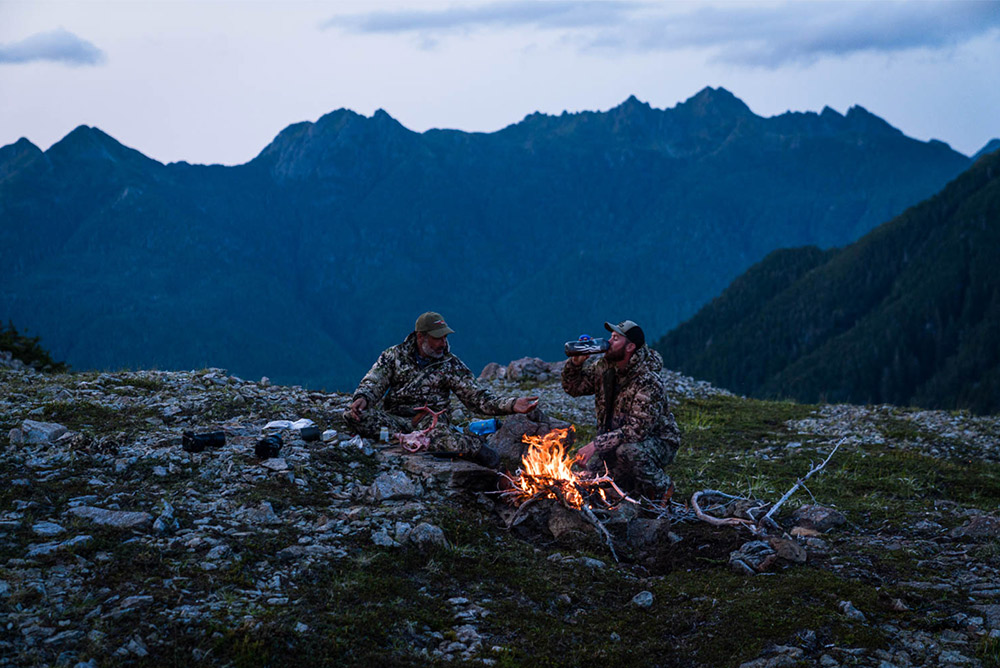
This isn’t a new technique or recipe by any means. Pit cooking is a commonly used technique for cooking primals or whole animals all around the world. What makes this method great for a backpack hunt is how few ingredients are required to pull it off. Secondly, because a lot of the cooking is hands off it leaves plenty of time to sit back and take in your surroundings.
For this trip we cooked 2 small blacktail shoulders with the shanks but for future trips the shanks are better saved for a moist cooking recipe. The whole process can take up to 6 hours, plan accordingly. Serves 2-4 depending on the size of the shoulder.
Ingredients
- 1 Cervid shoulder, shank removed. Deer, sheep, goat etc, it all works.
- 1 head Garlic
- 4 oz Seasoning Salt. This is more than you will need but better to have a bit extra than not enough. Use whatever brand blows your hair back: Johnnys, Lawry’s, Morton, Old Bay etc to name a few.
Equipment
- Knife
- Firewood
- Aluminum foil
- 1-2 Game bags - Use a tight knit cotton bag free of anti-bacterial chemicals. The bag should be twice the size of the shoulder to allow the bag to wrap around the shoulder a couple times. Synthetic bags will not work.
Technique
- Dig a 6” deep pit in the ground in a spot that you will be able to hang out at for the next couple of hours. The pit should be 2-3 times bigger than the shoulder you are going to cook.
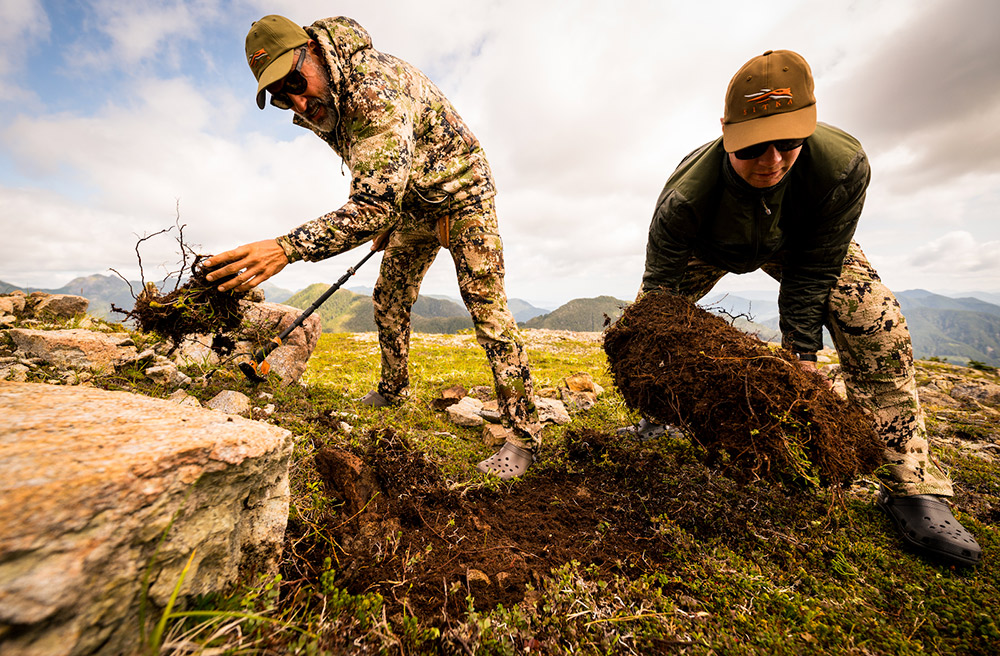
- Collect enough firewood to sustain a fire for 4 hours.
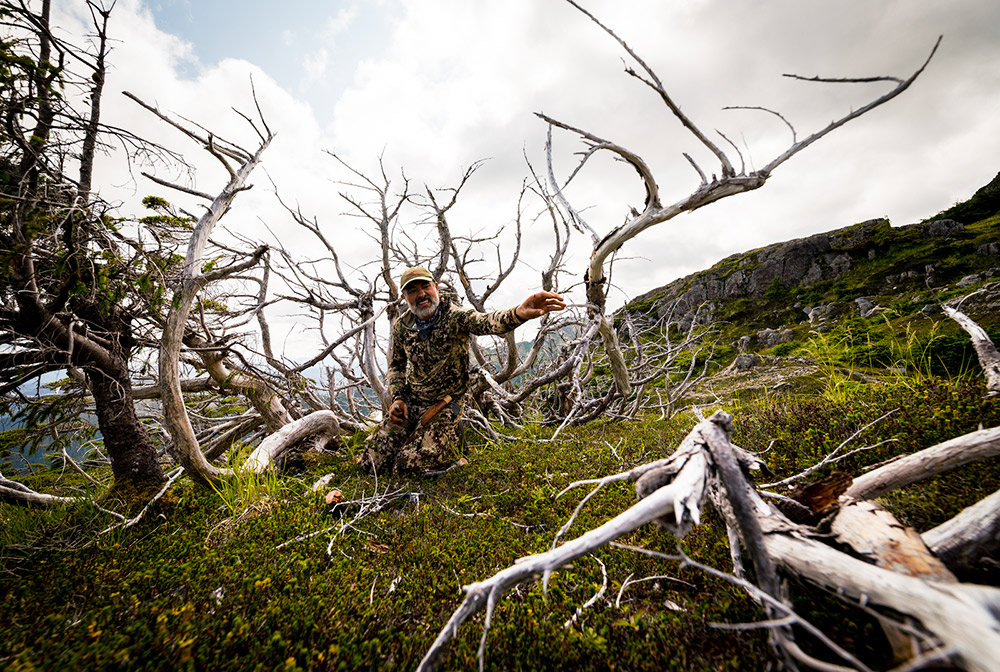
- Start a large fire in the middle of the pit and maintain the fire for an hour or more. This will heat up the ground around the pit and develop a good bed of coals.
- Use the knife to pierce the shoulder all over with 1” deep cuts.
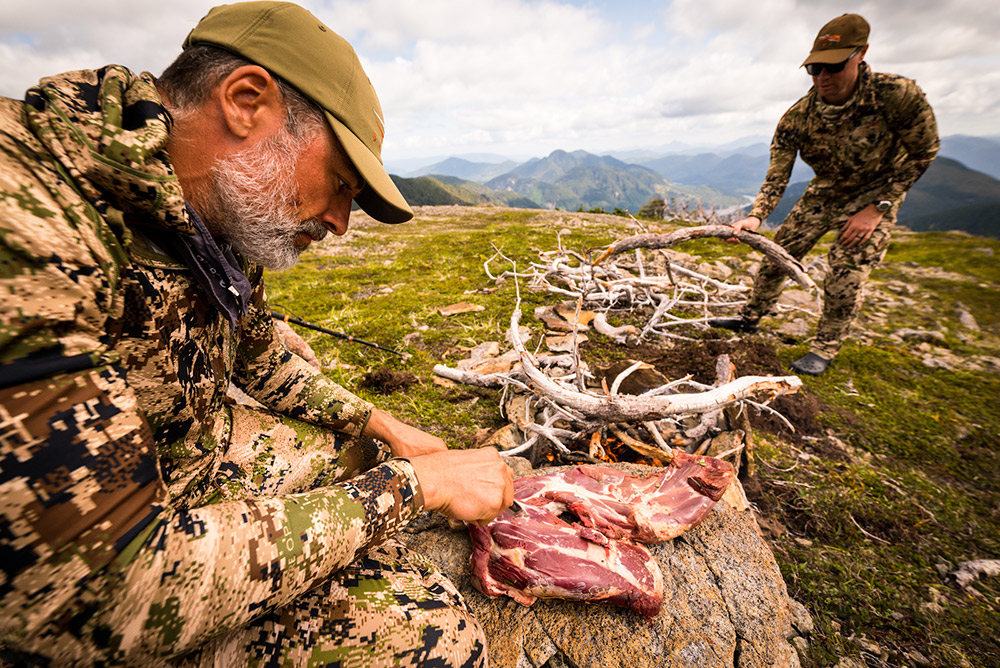
- Peel the garlic and cut the cloves in half.
- Push the halved cloves into the cuts in the shoulder meat.
- Season the shoulder liberally on all sides with the seasoning salt.
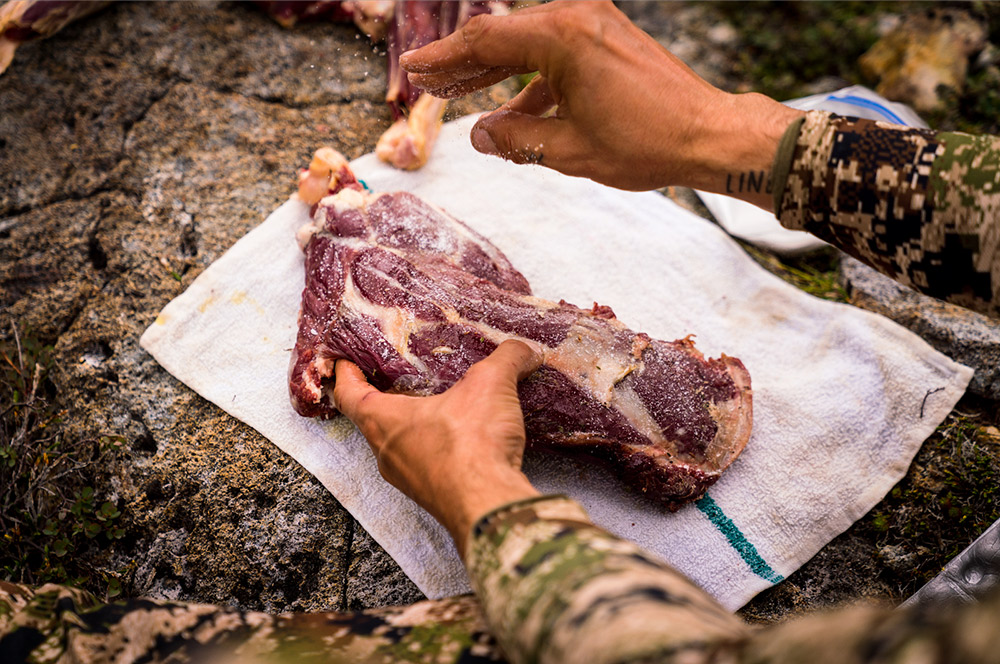
- Wrap the shoulder in aluminum foil. (We did not have aluminum foil on this trip but it is highly recommended.)
- Place the shoulder into the game bag and tie a knot tight up against the shoulder, sealing the bag.
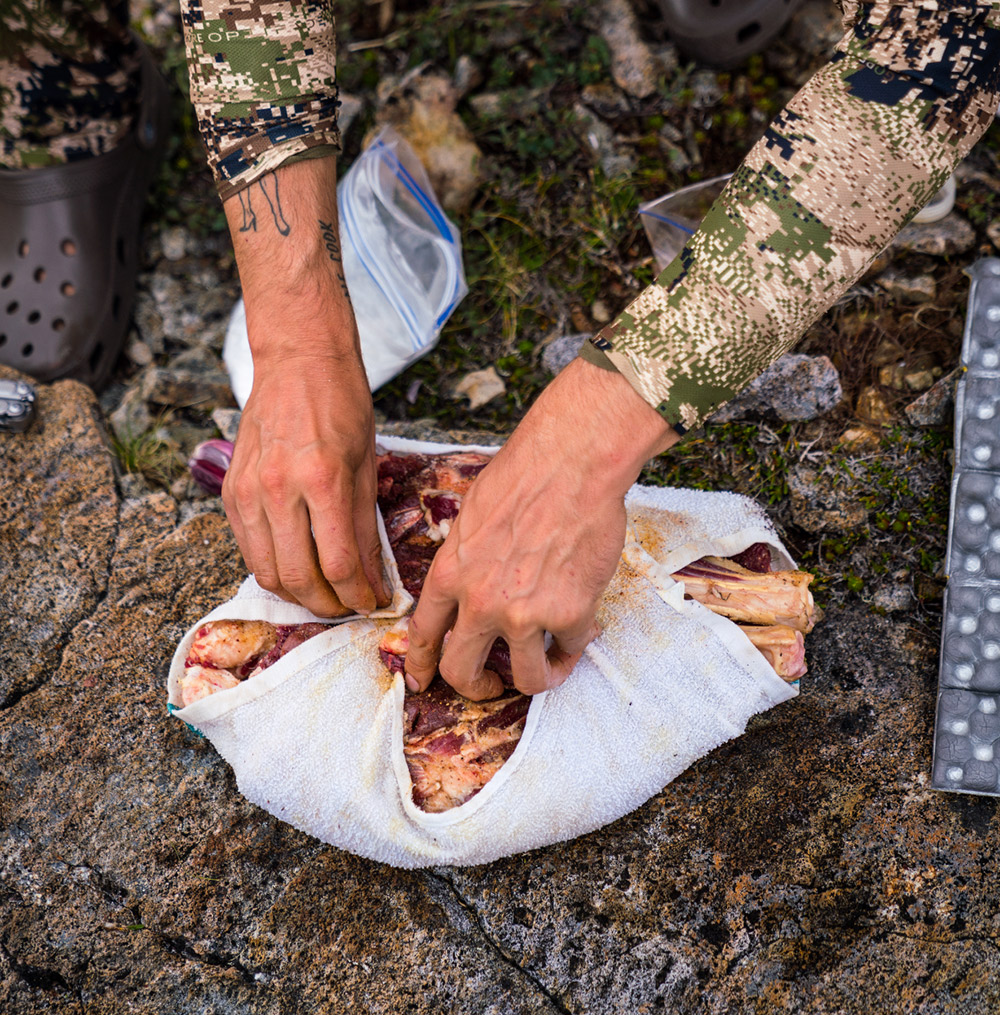
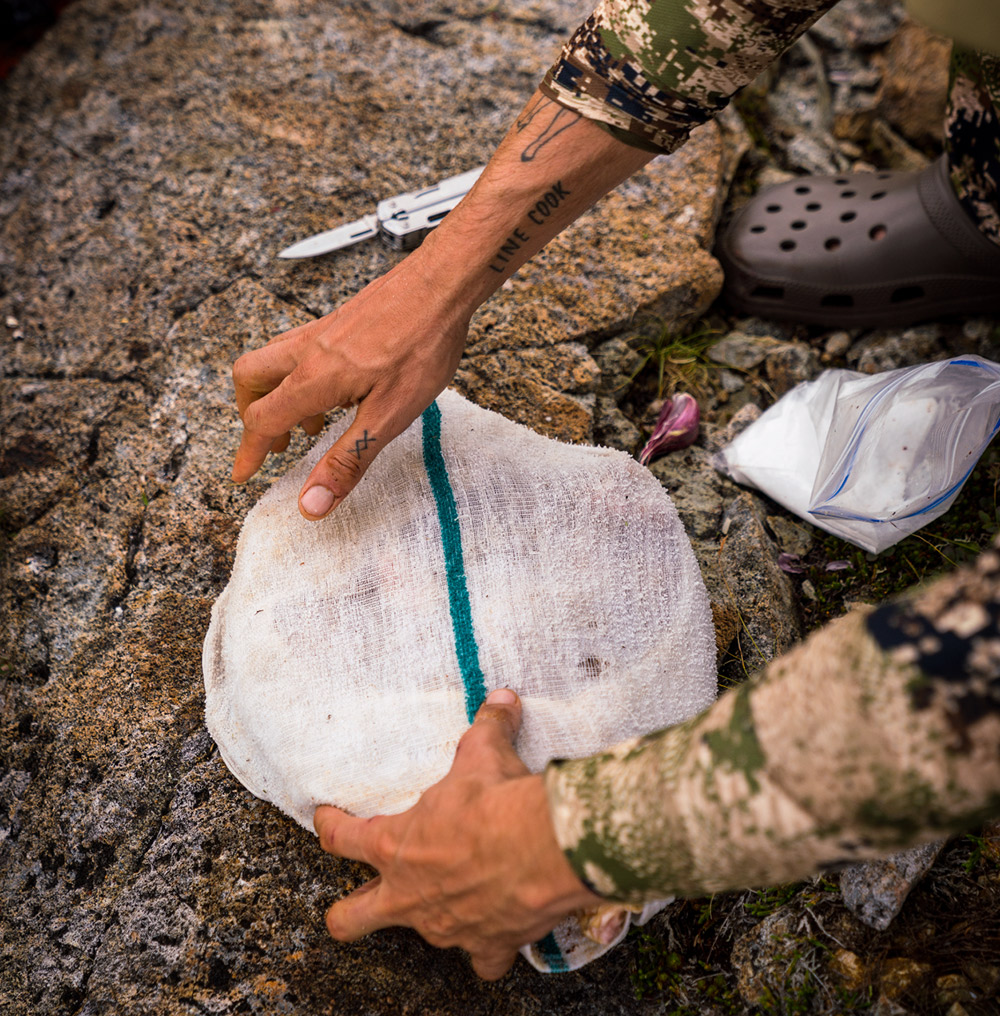
- Wrap the excess bag material around the bagged shoulder so that it is fully enclosed with multiple layers of the bag. The shoulder will be sitting directly in the dirt so the more you can cover the meat the better. Use a second bag if needed.
- Pull half of the fire out of the pit.
- Cover the pit fire with 2” of dirt or any other type of material that will not ignite and will insulate the meat from direct heat. Sod or sand will also work.
- Place the wrapped shoulder on the dirt and cover the top of the shoulder with the same amount of dirt.
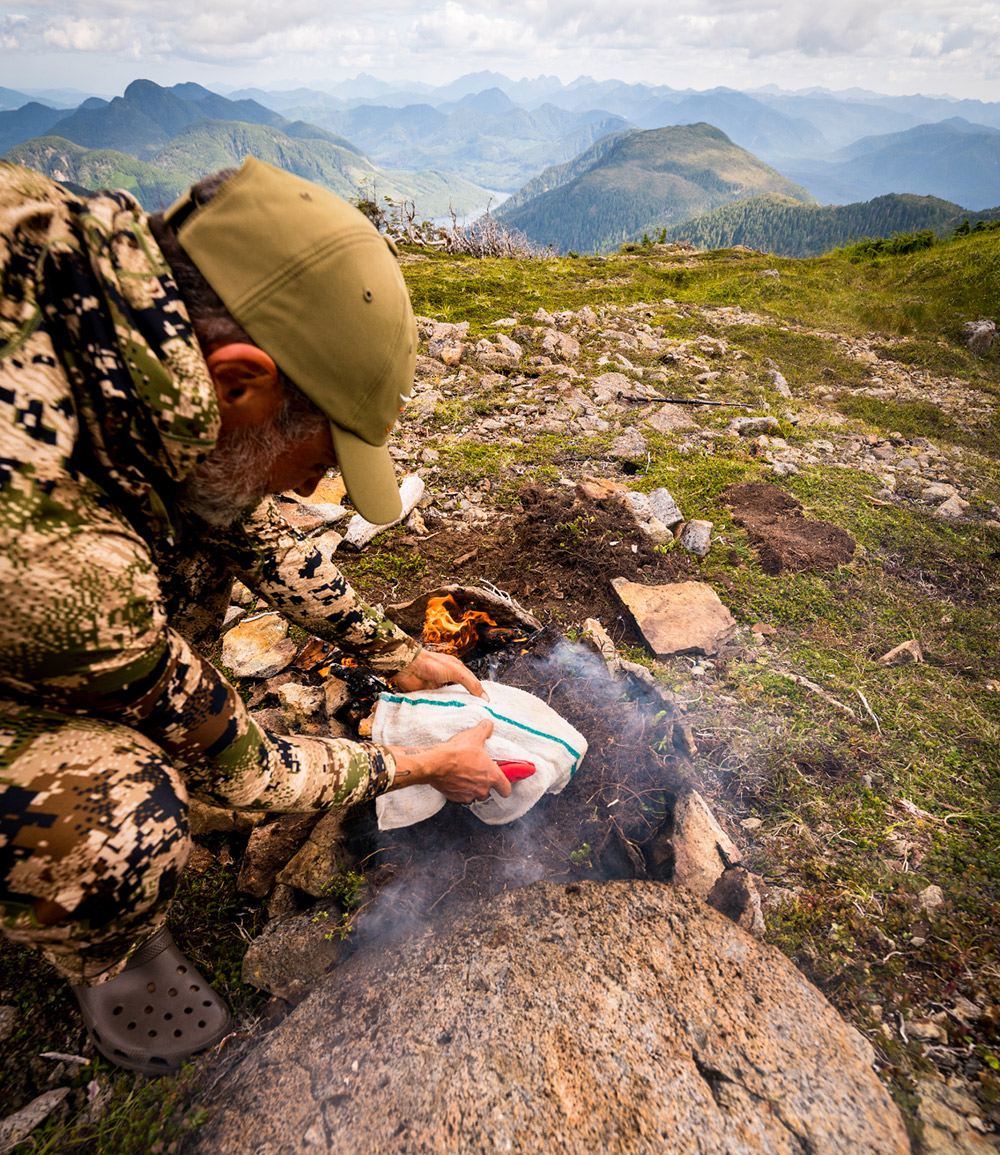
- Move the extra fire back onto the top of the buried shoulder and keep the top fire going for 3½ hours. For a large shoulder cook for an extra hour.
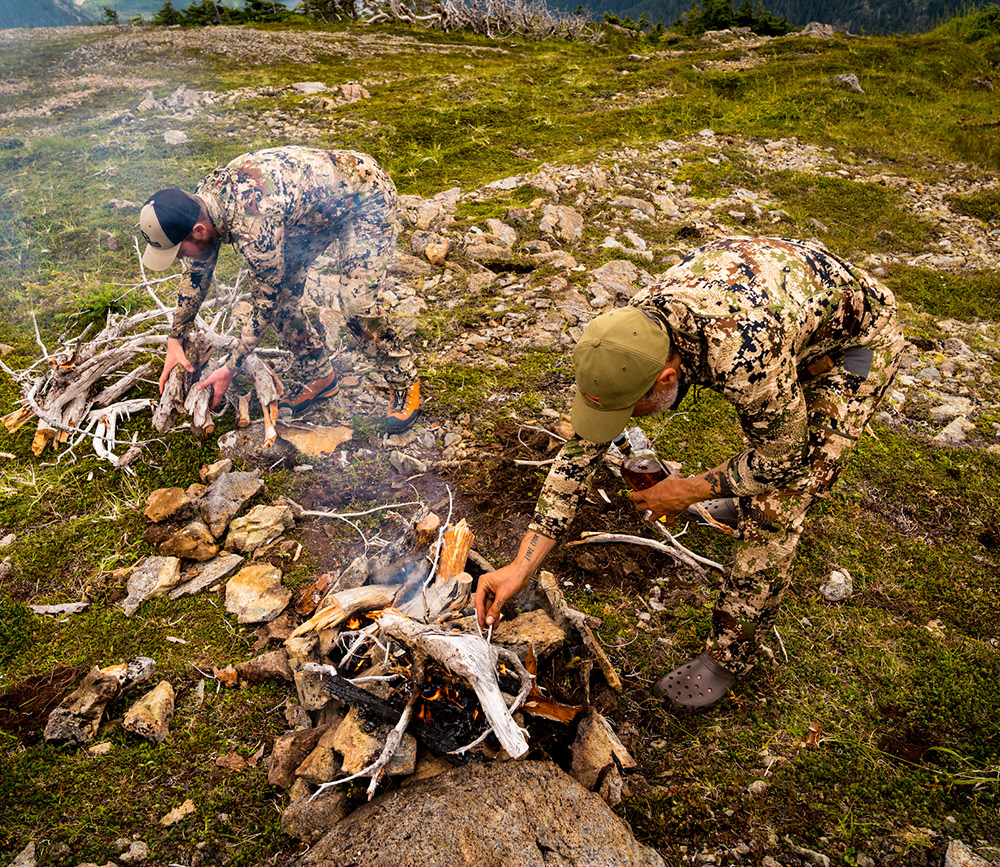
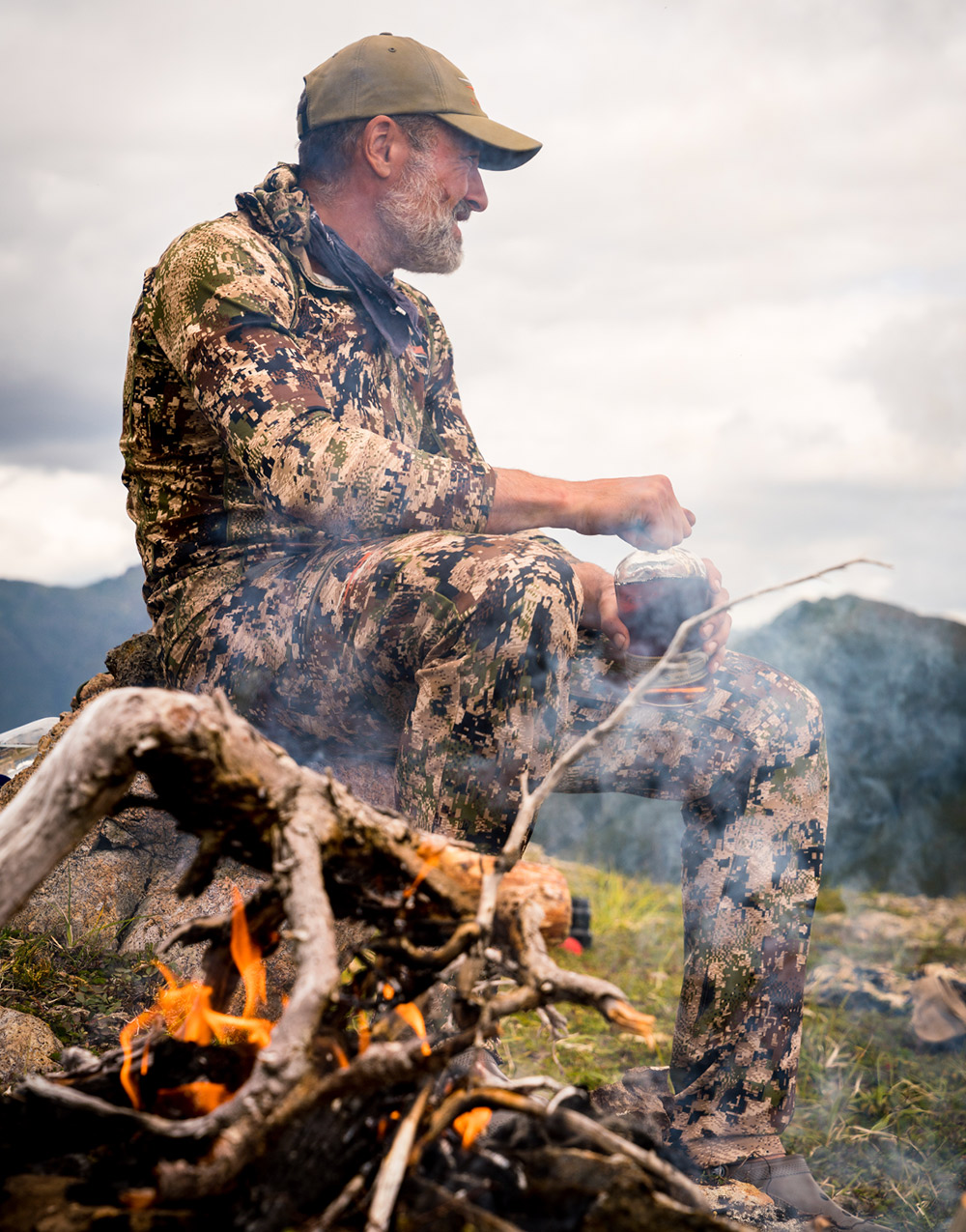
- Carefully pull the fire and dirt off the shoulder and remove it from the pit.
- Brush off as much dirt and ash as possible from the game bag and use a knife to cut the game bag open.
- Cut or pull the meat off the bone and season with more seasoning salt if needed.
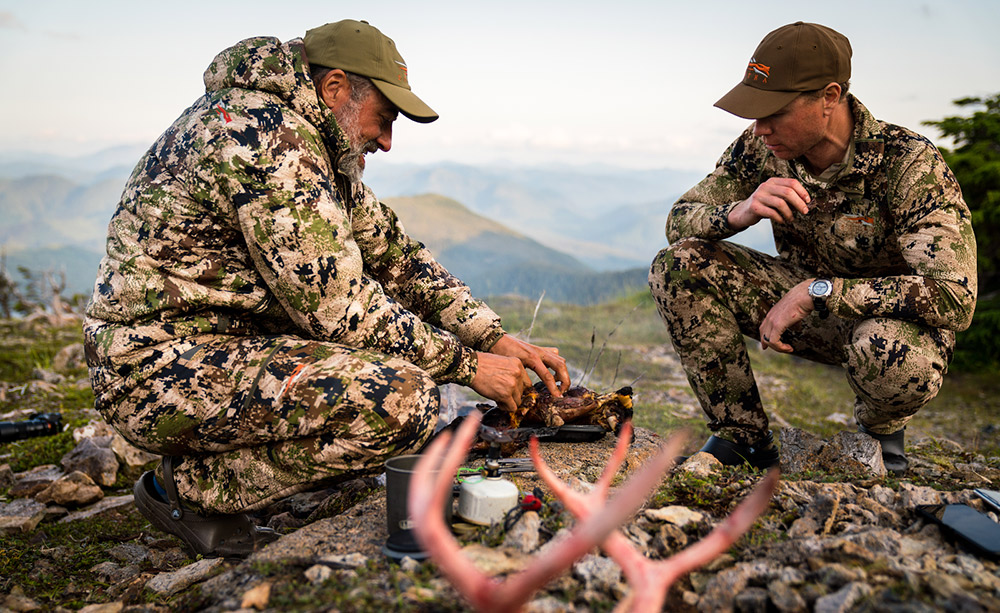
- Sit back and enjoy the meal in the environment it was taken from. This one is best eaten with your hands.
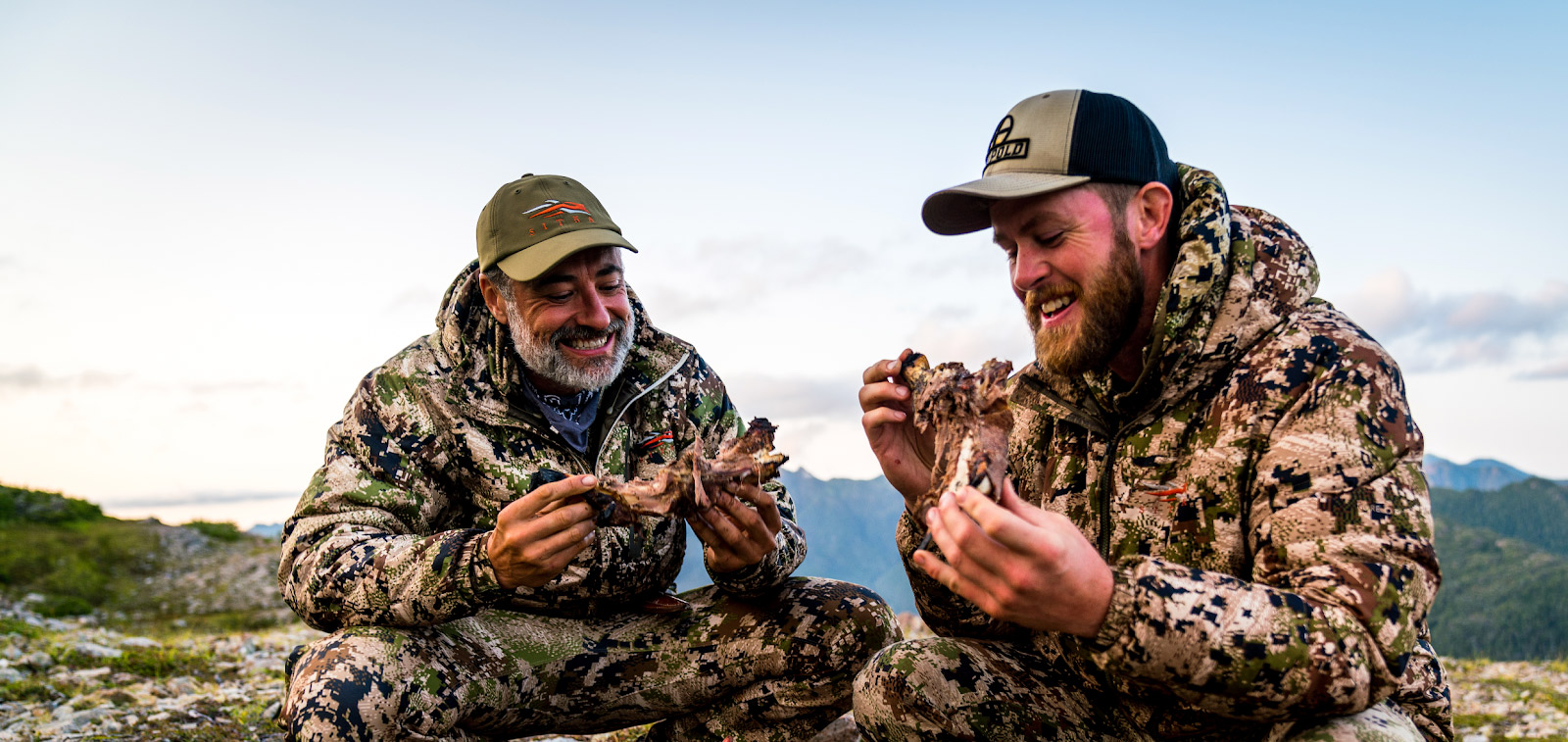
Notes: Pit cooking is all about managing fire, temperature and time to slow cook meat to perfection. It is not a skill that comes easy and it takes practice to master. One of the redeeming qualities of pit cooking on a hunt is no matter what level of skill you possess, given enough time the meat will be cooked and it will taste a hundred times better than the freeze dried meals you had been eating up until that point.
